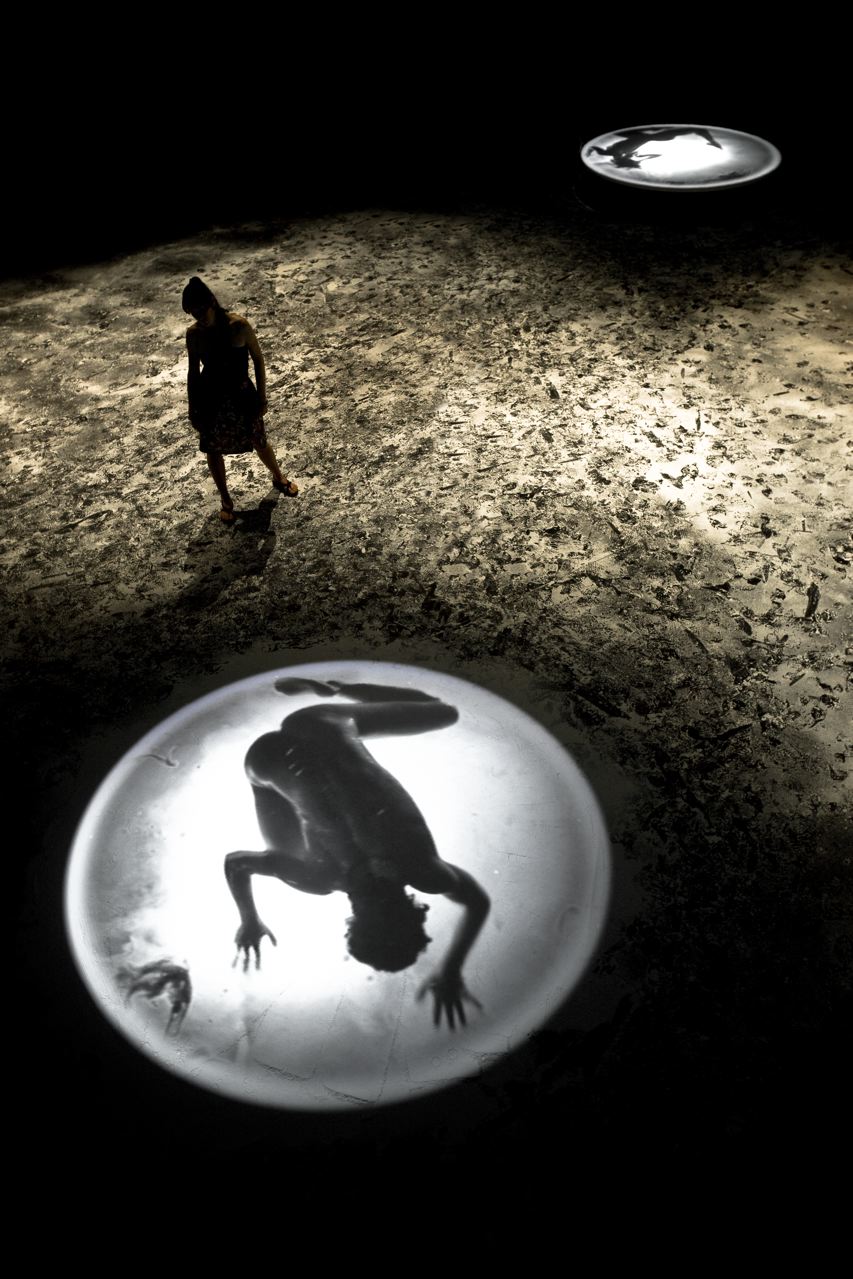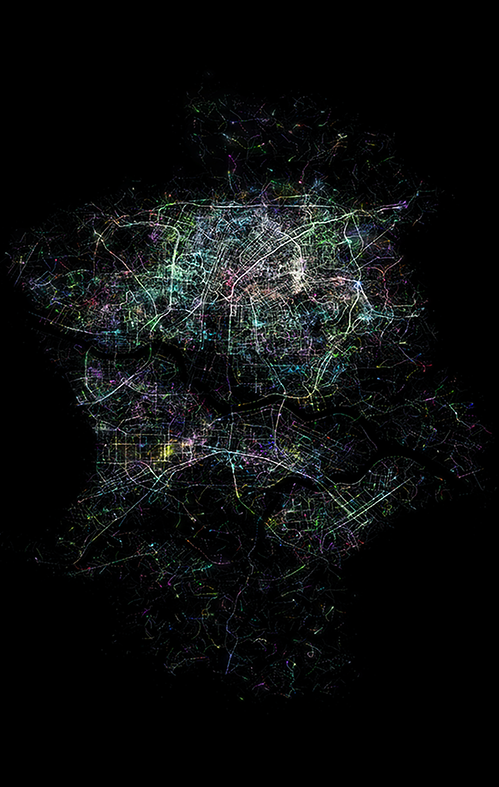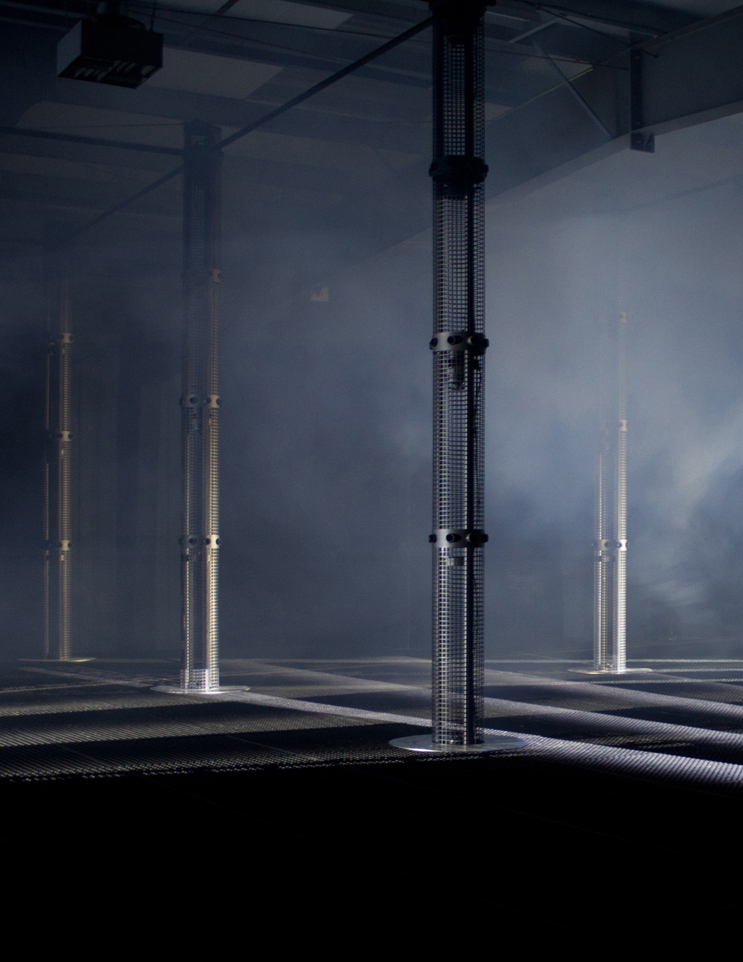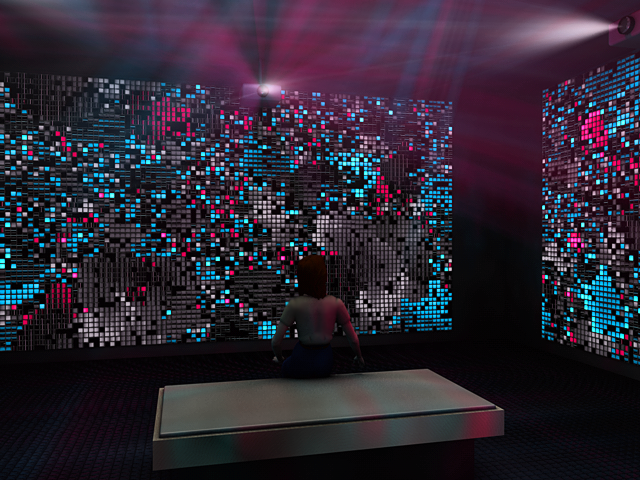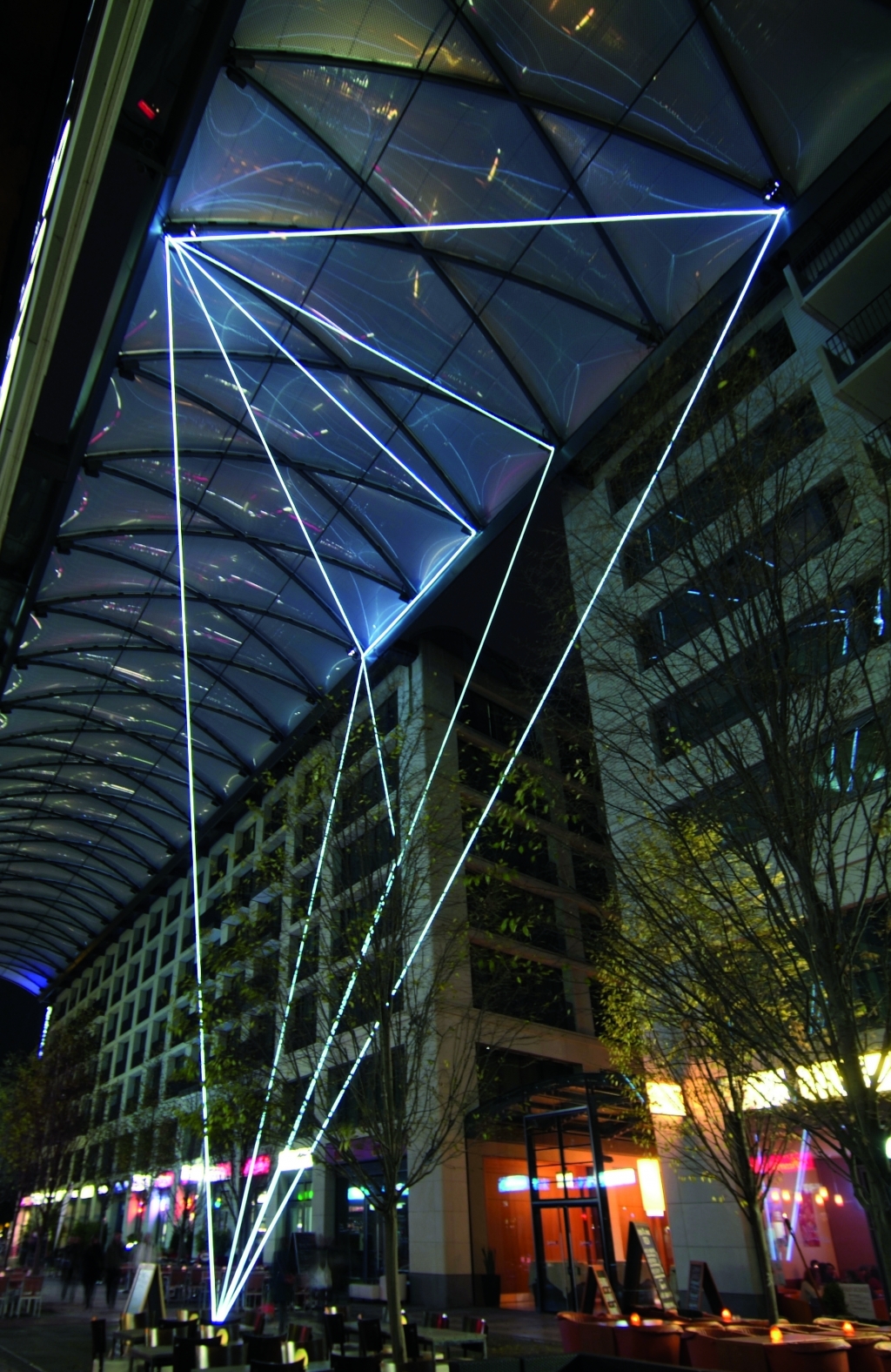A giant rail construction with an organically spiral-shaped spatial structure is put up in the exhibition space. Rolling on that rail are countless balls with built-in full-color LEDs and communication devices. From terminals set up inside the venue, visitors can send commands to the balls to control the timing and coloration of their blinking, and thereby draw three-dimensional afterimage in the air. Through the fusion of a minutely designed rail construction and communication control technology, an unprecedented form of spatial expression was realized in the form of a flexible “light structure“.

MARTIN HESSELMEIER & ANDREAS MUXEL
CAPACITIVE BODY
file festival
The installation “capacitive body” is a modular light system that reacts to the sound of its environment. Each custom-built module consists of an electro-luminescent light wire linked to a piezoelectric sensor and a microcontroller. Through its modular setup it can easily be adapted to various urban spaces. The sensors are used to measure vibrations of architectural solids in a range of low frequencies. These oscillations are triggered by surrounding ambient noise, for example traffic noise. The data sensor controls the light wires, which are tensed to a spatial net structure. According to the values of the measurement, light flashes are generated. With increasing vibrations the time between flashes becomes shorter and shorter. The stability of this nervous system gets to an end where it collapses and restarts again. A dynamic light space is thereby created, which creates a visual feedback of the aural activity around the installation.










